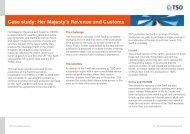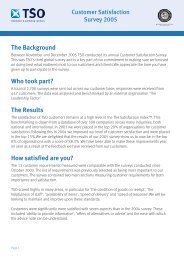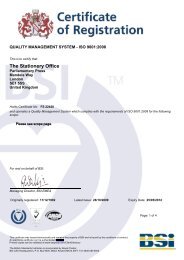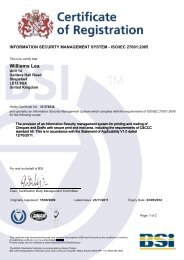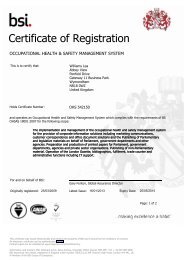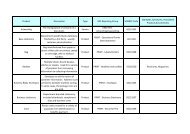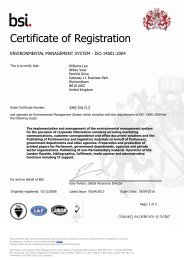Guidance and requirements for laying papers before the House of ...
Guidance and requirements for laying papers before the House of ...
Guidance and requirements for laying papers before the House of ...
- No tags were found...
You also want an ePaper? Increase the reach of your titles
YUMPU automatically turns print PDFs into web optimized ePapers that Google loves.
Journal Office <strong>Guidance</strong> <strong>and</strong> <strong>requirements</strong> <strong>for</strong> <strong>laying</strong> <strong>papers</strong> be<strong>for</strong>e <strong>the</strong> <strong>House</strong> <strong>of</strong> Commons <strong>and</strong> <strong>the</strong>ir publication: April 200954. If your paper is laid under a different Act, <strong>the</strong> Act will specifywhe<strong>the</strong>r <strong>the</strong> document is to be laid be<strong>for</strong>e Parliament or be<strong>for</strong>e<strong>the</strong> <strong>House</strong> <strong>of</strong> Commons. Your lawyers or those <strong>of</strong> your parentdepartment will be able to check this <strong>for</strong> you.55. Comm<strong>and</strong> <strong>papers</strong> <strong>and</strong> Statutory Instruments are normally laidbe<strong>for</strong>e both <strong>House</strong>s.56. The in<strong>for</strong>mation in this booklet relates to <strong>laying</strong> <strong>requirements</strong><strong>for</strong> <strong>the</strong> <strong>House</strong> <strong>of</strong> Commons. However, <strong>the</strong> <strong>requirements</strong> <strong>of</strong> <strong>the</strong><strong>House</strong> <strong>of</strong> Lords are substantially similar. Contact details <strong>for</strong> <strong>the</strong>Printed Paper Office in <strong>the</strong> <strong>House</strong> <strong>of</strong> Lords are at <strong>the</strong> back <strong>of</strong>this booklet.Timing <strong>of</strong> release <strong>and</strong> publication <strong>of</strong> <strong>papers</strong> laid be<strong>for</strong>e<strong>the</strong> <strong>House</strong>57. A paper is considered to be <strong>for</strong>mally laid be<strong>for</strong>e <strong>the</strong> <strong>House</strong> whena copy <strong>of</strong> it is accepted by <strong>the</strong> Journal Office. At that pointMembers <strong>of</strong> <strong>the</strong> <strong>House</strong> are able to come to <strong>the</strong> Journal Officeto view to <strong>the</strong> document. Once laid, government departmentsshould, shortly afterwards, make hard copies <strong>of</strong> <strong>the</strong> documentavailable to <strong>the</strong> Vote Office so that copies can be made availableto Members. 13 This does not mean that <strong>the</strong> document hasalso to be available to <strong>the</strong> general public at that time (i.e. if youare <strong>laying</strong> advance copies <strong>for</strong> <strong>the</strong> <strong>House</strong>). If TSO are arrangingpublication <strong>of</strong> a document,usually provide <strong>the</strong> Vote Office withhard copies. If your document is an Un-numbered Comm<strong>and</strong>Paper (o<strong>the</strong>r than an Explanatory Memor<strong>and</strong>um to a StatutoryInstrument) you should e-mail a copy to <strong>the</strong> Vote Office shortlyafter it has been laid (Vote_Office@parliament.uk).13 Speaker’s Ruling, 25 March 2009 (HCDeb Col 307)..22



